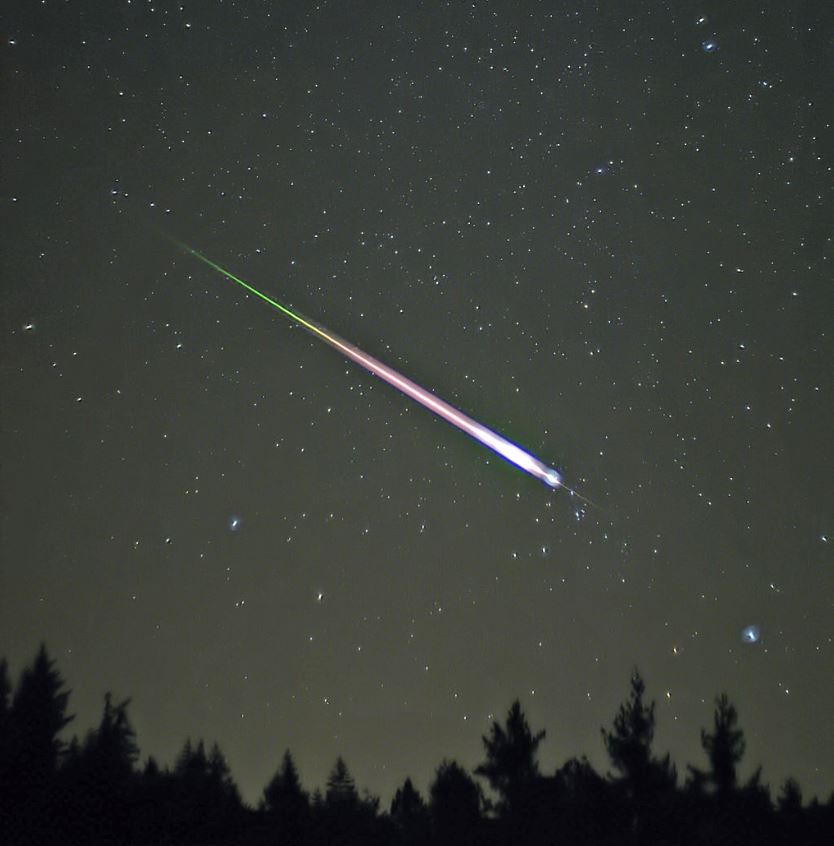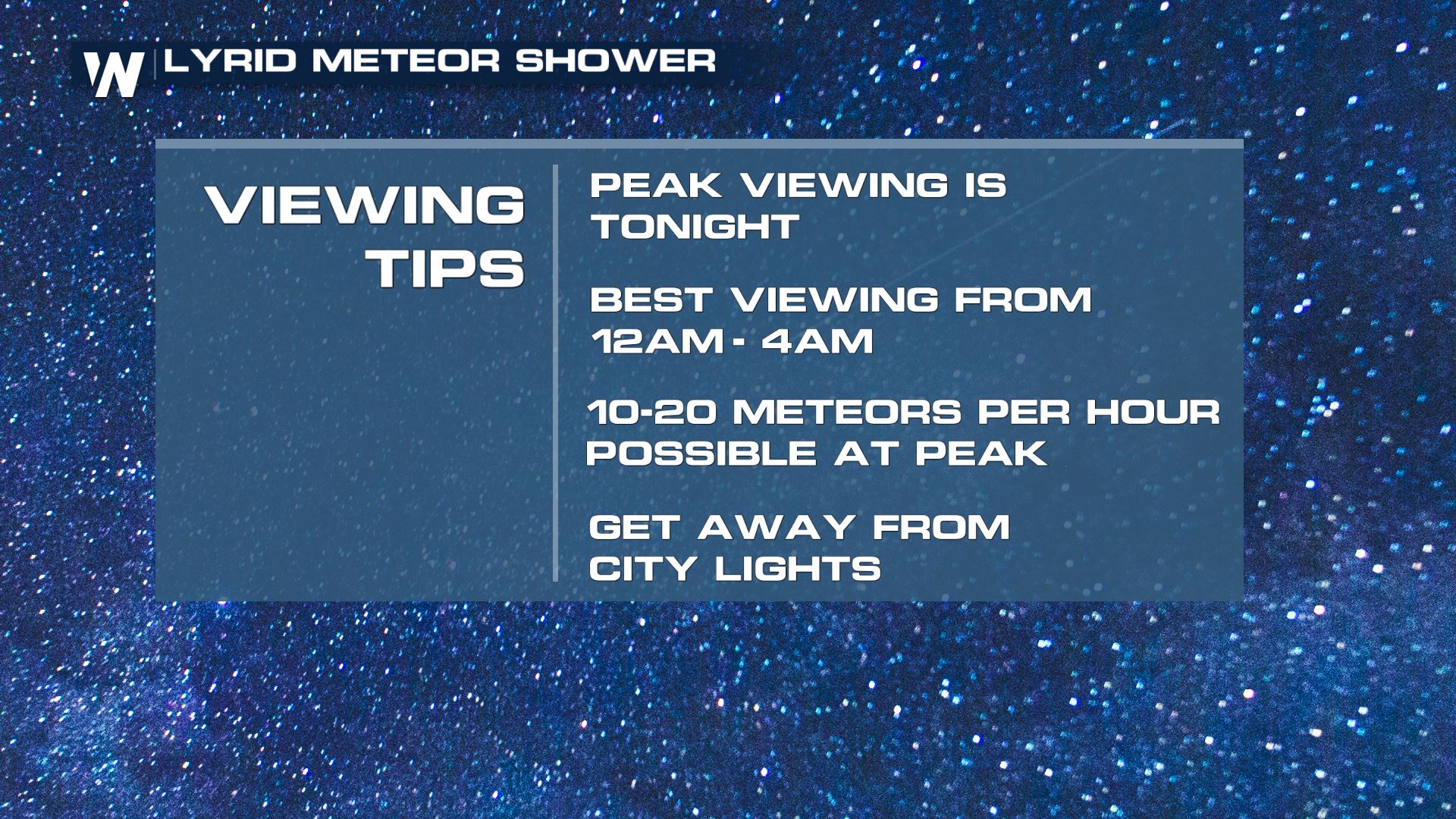Lyrid Meteor Showers Peaking Sunday Night
Top Stories
21 Apr 2019 5:53 PM
Tonight the Lyrid meteor shower will reach peak activity. And it should be quite a show! Typically, the Lyrids showcase between 10 and 20 meteors per hour during the peak. Of course, it's always difficult to tell how many will be visible to the naked eye. They happen around this time each year. That's when the Earth's orbit crosses paths with that of Comet Thatcher. This year the Lyrids are active between April 16th and 28th, with peak activity happening tonight into Monday morning, April 21st-22nd.
The meteors flash across the sky at an incredible speed of 107,000 miles per hour, about 55 miles above the surface of the earth. What you're seeing is the debris trail left behind by Comet Thatcher, interacting with the earth's atmosphere. Comet Thatcher's last journey around the sun was back in 1861, yet the debris trail remains. The trail is comprised of rocks and ice that burn up when they come in contact with the earth's atmosphere. Some of the debris can be as small as a grain of sand!

 Many areas in the U.S. will have wonderful viewing conditions. However, some areas will be marred with clouds and showers. These areas are highlighted in the pink circles below. Clouds and showers will be found in a general line from Nevada, through Wyoming, parts of Colorado, across South Dakota and Nebraska, into Minnesota and Wisconsin.
Many areas in the U.S. will have wonderful viewing conditions. However, some areas will be marred with clouds and showers. These areas are highlighted in the pink circles below. Clouds and showers will be found in a general line from Nevada, through Wyoming, parts of Colorado, across South Dakota and Nebraska, into Minnesota and Wisconsin.
 You won't need binoculars or telescopes to see the show. In fact, it's best to use your naked eye. Binoculars or telescopes usually limit your field of view. You may need to spend about 30 minutes in the dark to let your eyes adjust to the night conditions.
Below are a few more tips to enhance your viewing experience:
You won't need binoculars or telescopes to see the show. In fact, it's best to use your naked eye. Binoculars or telescopes usually limit your field of view. You may need to spend about 30 minutes in the dark to let your eyes adjust to the night conditions.
Below are a few more tips to enhance your viewing experience:
 Another factor that could hinder viewing tonight, is a nearly full moon. The full moon officially happened on Friday. But the moon will still be 95 percent illuminated while in the waning gibbous phase. This will brighten the night sky significantly, possibly causing diminished visibility.
Another factor that could hinder viewing tonight, is a nearly full moon. The full moon officially happened on Friday. But the moon will still be 95 percent illuminated while in the waning gibbous phase. This will brighten the night sky significantly, possibly causing diminished visibility.
 But don't let a little extra moonlight stop you from heading outside to catch the celestial wonders that you're almost certain to see whiz on by! Don't forget to make a wish!
For WeatherNation: Meteorologist Matt Monroe
But don't let a little extra moonlight stop you from heading outside to catch the celestial wonders that you're almost certain to see whiz on by! Don't forget to make a wish!
For WeatherNation: Meteorologist Matt MonroeAll Weather News
More